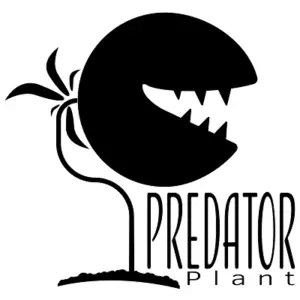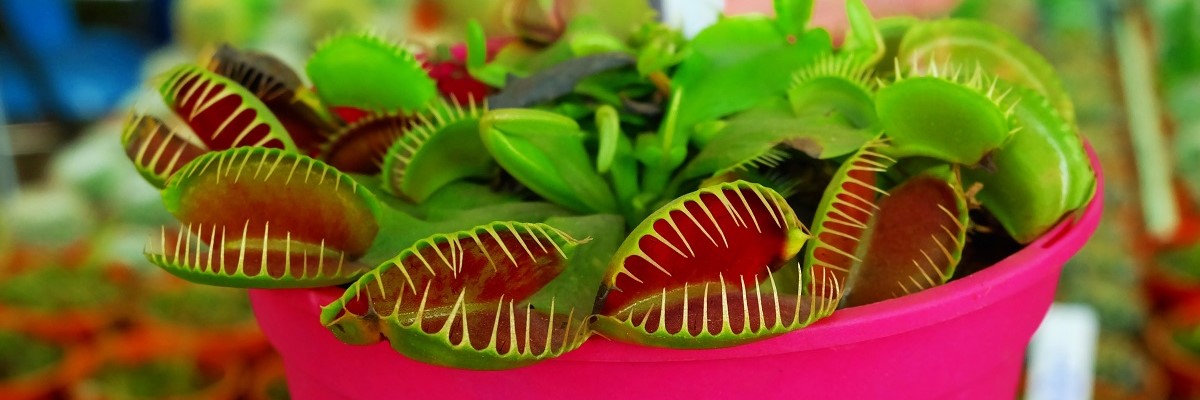Yes, Venus Flytraps can eat mealworms. Venus Flytraps are a carnivorous plant species native to the coastal wetlands of the southeastern United States. They are well known for their unique method of capturing insects, which they use as a source of nutrients. The plant has modified leaves that form a “trap” to capture its prey. When an insect lands on the trap, the two lobes of the leaf quickly close, trapping the insect inside. The plant then secretes digestive enzymes to break down the insect and absorb its nutrients.
Venus Flytraps have a small, shallow root system and are unable to obtain enough nutrients from the soil to survive. Instead, they have evolved to feed on insects and other small creatures to supplement their nutrient intake. Venus Flytraps are hardy plantshttps://predatorplant.com/how-do-venus-flytraps-digest-must-learn-this/ and can adapt to a range of conditions, but they require a specific set of growing conditions to thrive, including moist and well-drained soil and bright but indirect sunlight.
Can Venus Flytraps Eat Mealworms?
The answer to whether Venus Flytraps can eat mealworms is yes, but with some considerations. While Venus Flytraps are capable of digesting mealworms, they are not a natural food source for the plant. In the wild, Venus Flytraps primarily feed on small insects, such as flies, ants, and spiders.
Mealworms are much larger than the insects that Venus Flytraps typically feed on, and as a result, they can be difficult for the plant to digest. In addition, mealworms are not as nutritionally balanced as other insects and may not provide the plant with all of the nutrients it needs to thrive.
While Venus Flytraps can eat mealworms, it is not recommended to feed them this food source on a regular basis. If you choose to feed mealworms to your Venus Flytrap, it is important to do so in moderation and to provide a balanced diet of other insects as well. Overfeeding with mealworms or any other food source can lead to health problems for the plant and can negatively impact its overall well-being.
In conclusion, while Venus Flytraps can technically eat mealworms, it is not the best food source for the plant and should be used in moderation as part of a balanced diet.
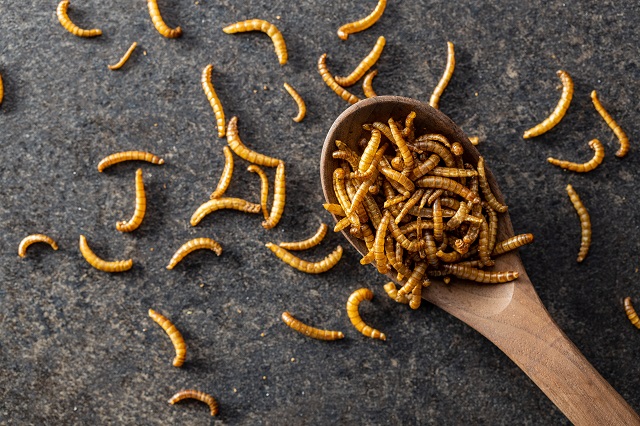
What are Mealworms
Mealworms are the larvae of the Darkling Beetle and are commonly used as a food source for pets and wildlife. They are rich in protein and fat, making them an attractive food source for many species. In the wild, mealworms can be found in a variety of habitats, including forests, fields, and even urban areas. They are often attracted to moist environments where they can burrow into the soil to pupate and later emerge as adult beetles.
In the pet and animal feed industry, mealworms are widely available and can be purchased in bulk, making them a convenient and affordable food source for a variety of animals. They are also relatively low maintenance and can be stored for long periods of time, making them a popular choice for pet owners and farmers.
Mealworms can be fed to a variety of animals, including reptiles, birds, and small mammals. They are also commonly used as a food source for captive-raised insects, such as beetles, mantids, and praying mantids. When feeding mealworms to animals, it is important to provide fresh, clean water and monitor the quantity of food to ensure that the animal receives a balanced diet. Overfeeding can lead to health problems and negatively impact the animal’s overall health and well-being.
Nutritional Value of Mealworms
Mealworms are a nutritious food source that is high in protein and fat, making them an attractive food source for many species of animals. A 100g serving of dried mealworms contains approximately:
- Protein: 52g
- Fat: 26g
- Carbohydrates: 5g
- Fiber: 2g
- Calcium: 200mg
- Phosphorus: 380mg
- Iron: 7.2mg
In addition to these macro-nutrients, mealworms also contain a range of essential vitamins and minerals, including vitamins B, C, and E, as well as magnesium, potassium, and zinc. These nutrients play important roles in the health and well-being of the animals that consume them and help to support growth, development, and overall health.
It is important to note that mealworms should be fed in moderation as part of a balanced diet. Overfeeding with mealworms or any other food source can lead to health problems for the animal and can negatively impact its overall well-being. When feeding mealworms to animals, it is important to provide fresh, clean water and monitor the quantity of food to ensure that the animal receives a balanced diet.
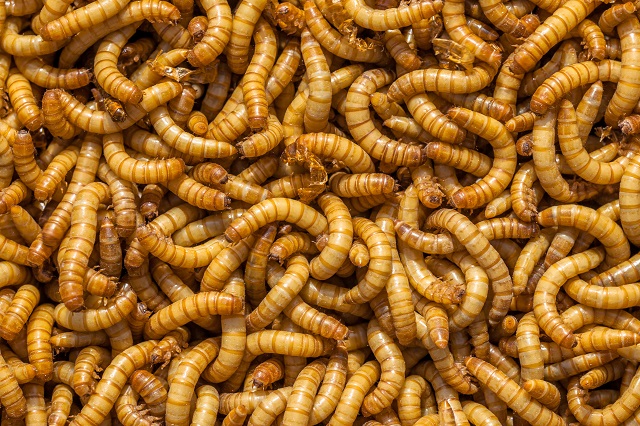
Venus Flytrap’s Feeding Habits
Venus Flytraps are carnivorous plants that feed on small insects and spiders. In the wild, they are typically found in nutrient-poor environments, where they have evolved to rely on capturing and digesting insects for survival. The Venus Flytrap has specialized structures, such as the leaves that form its “trap,” that help it to capture and digest its prey.
Venus Flytraps have small, sensitive hairs on the inside of their traps that detect the movement of potential prey. When an insect lands on the trap, it triggers the hairs and causes the trap to close, capturing the insect inside. The trap then secretes digestive juices, which break down the insect and absorb the nutrients.
Venus Flytraps typically feed on small insects, such as flies, ants, and spiders, and they require a diet that is rich in protein and other essential nutrients. In the wild, Venus Flytraps can be found in a variety of habitats, including wetlands and bogs, where they can capture insects that are attracted to the moisture.
In captive environments, Venus Flytraps can be fed a diet of small insects, such as flies, crickets, and spiders. It is important to provide a balanced diet of insects and monitor the quantity of food to ensure that the plant receives adequate nutrients. Overfeeding can lead to health problems and negatively impact the plant’s overall health and well-being.
How to Feed Venus Flytraps with Mealworms
Preparing the Mealworms
Preparing mealworms as a food source for Venus Flytraps is simple and straightforward. Mealworms can be purchased dried or live, and they can be stored for extended periods of time. If purchasing live mealworms, it is important to keep them in a container with bedding, such as oatmeal or sawdust, and to provide them with a source of moisture and food, such as carrots or apples.
When preparing the mealworms for feeding to Venus Flytraps, it is important to ensure that they are clean and free of contaminants. Live mealworms should be washed with water and dried thoroughly before being fed to the plant. Dried mealworms can be crushed into small pieces and sprinkled onto the traps, or they can be rehydrated in water and then fed to the plant.
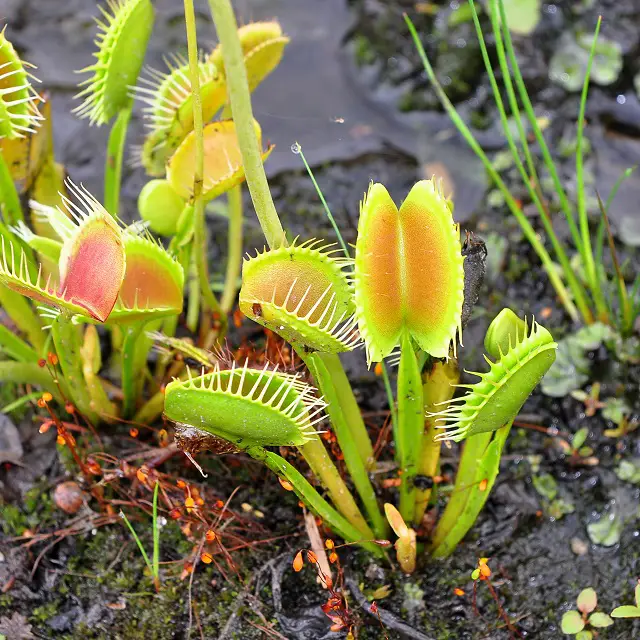
Proper Technique for Feeding
Proper technique is important when feeding mealworms to Venus Flytraps. Improper feeding can lead to health problems for the plant and can negatively impact its overall well-being.
To feed a Venus Flytrap, gently place a small piece of mealworm or a live mealworm onto the center of one of the traps. It is important to avoid touching the sensitive hairs inside the trap, as this can cause the trap to close prematurely before the mealworm has a chance to be captured.
Once the mealworm is in place, it is important to wait for the trap to close completely, indicating that the Venus Flytrap has captured the prey. The trap will then secrete digestive juices, breaking down the mealworm and absorbing the nutrients. Over time, the trap will slowly reopen, and the remains of the mealworm will be visible.
How Often to Feed Mealworms
Venus Flytraps should be fed mealworms in moderation, and it is important to be mindful of how often they are fed. Overfeeding the plant can lead to health problems and can negatively impact its overall well-being.
In general, Venus Flytraps should only be fed once or twice a week. It is important to monitor the plant’s growth and health and adjust the feeding frequency as needed. If the plant appears to be thriving and growing well, it may be possible to feed it more frequently. However, if the plant appears to be struggling or the traps are not fully opening, it is best to reduce the feeding frequency or discontinue feeding altogether until the plant has recovered.
It is also important to note that Venus Flytraps have a natural dormancy period, during which they do not actively grow or feed. During this time, it is best to stop feeding the plant altogether, as it is not actively digesting food and is using stored energy to survive.
Pros and Cons of Feeding Venus Flytraps with Mealworms
Advantages of Feeding with Mealworms
Feeding Venus Flytraps with mealworms has several advantages, including:
- Nutritional Value: Mealworms are a good source of protein and other nutrients that are important for the growth and health of Venus Flytraps. By feeding the plant with mealworms, it can easily obtain the nutrients it needs to thrive.
- Convenience: Mealworms are readily available and can be purchased at pet stores or online. They are also easy to prepare and store, making them a convenient food source for Venus Flytraps.
- Stimulation: Venus Flytraps are carnivorous plants, and feeding them with live mealworms can help to stimulate their natural hunting and feeding behaviors. This can help to keep the plant healthy and can prevent boredom.
- Fun: Feeding Venus Flytraps with mealworms can be a fun and interactive activity for those who are interested in growing and caring for these unique and fascinating plants.
- Cost-effective: Compared to other food sources, mealworms are relatively inexpensive, making them an affordable option for feeding Venus Flytraps.
Disadvantages of Feeding with Mealworms
Feeding Venus Flytraps with mealworms also has some disadvantages, including:
- Overfeeding: Mealworms are a high-protein food source, and feeding Venus Flytraps too many mealworms can lead to overfeeding, which can cause health problems for the plant.
- Risk of Disease: Mealworms can carry disease, which can be transmitted to the Venus Flytrap. It is important only to use mealworms from reputable sources and thoroughly clean them before feeding them to the plant.
- Unnatural diet: Venus Flytraps are naturally adapted to feed on insects, not mealworms. Feeding the plant with mealworms may alter its natural feeding habits and could negatively impact its health and well-being.
- Maintenance: Feeding Venus Flytraps with mealworms requires regular monitoring and maintenance, which can be time-consuming and can become a burden for those who are not prepared to commit to the care and maintenance of the plant.
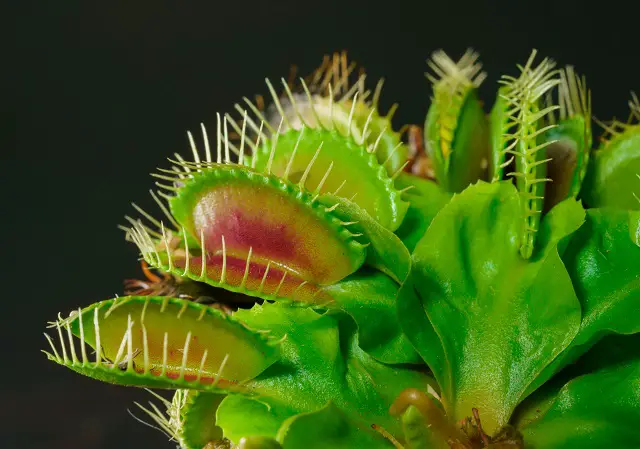
Conclusion
In conclusion, Venus Flytraps are unique and fascinating carnivorous plants that can be fed with mealworms. While feeding the plant with mealworms has several advantages, including nutritional value, convenience, stimulation, and cost-effectiveness, it also has some disadvantages, including the risk of overfeeding, disease transmission, and maintenance requirements.
In terms of feeding the Venus Flytrap with mealworms, it is important to prepare the mealworms properly, use the proper feeding techniques, and monitor the plant’s health and feeding habits regularly. Additionally, it is important to only feed the plant with mealworms on a limited basis and to adjust the frequency and amount of feeding as needed.
Finally, it is important to consider the advantages and disadvantages of feeding Venus Flytraps with mealworms and to weigh the pros and cons before making a decision. While feeding the plant with mealworms can be a fun and interactive activity, it is important to remember that the health and well-being of the plant should always be the top priority.
In summary, Venus Flytraps can be fed with mealworms, but it is important to do so carefully and responsibly in order to maintain the health and well-being of the plant.
